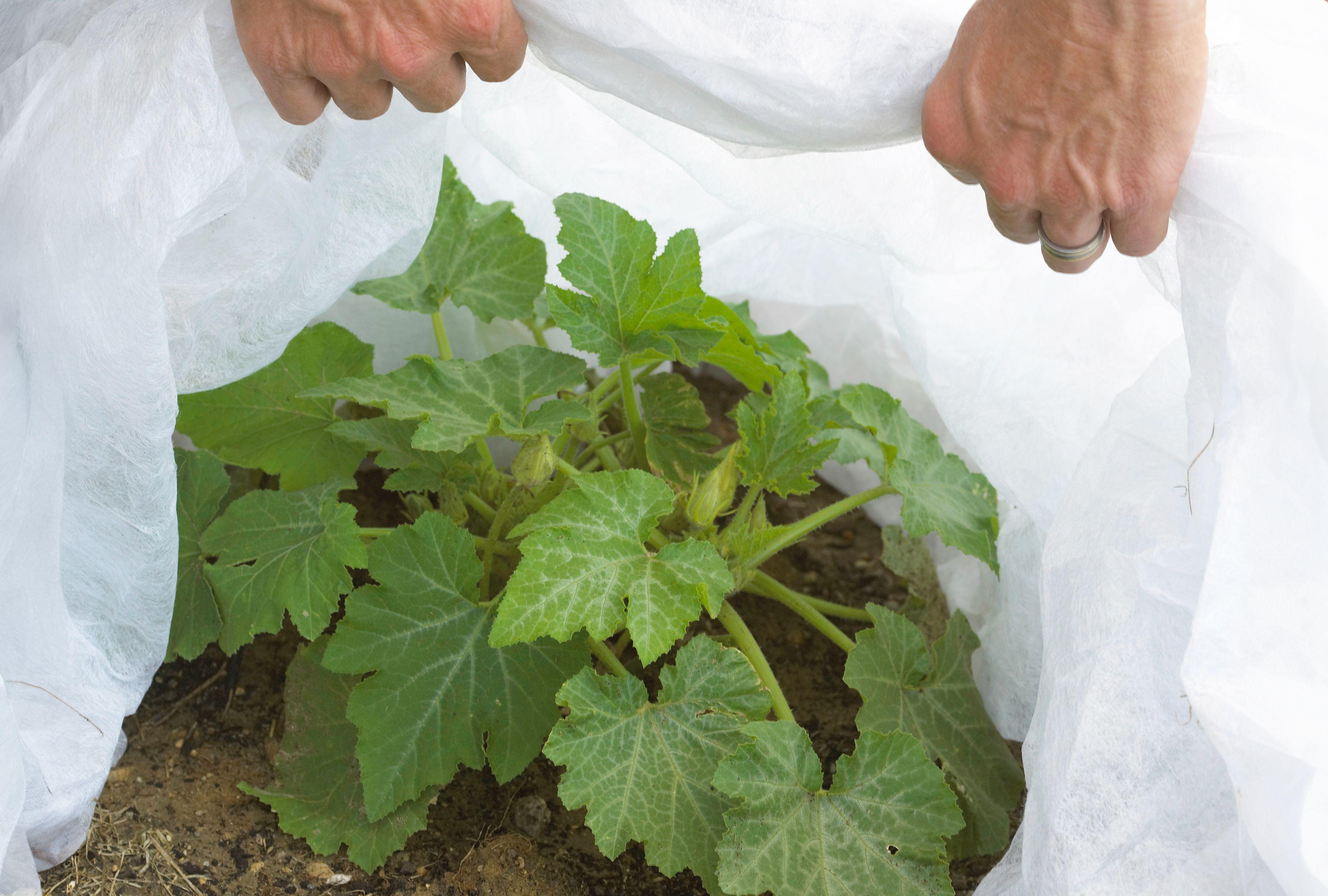Cold-tolerant crops like kale and Brussels sprouts handle frost with ease and often taste better after a spell of cold weather. Heat-loving plants, on the other hand, just aren’t built to withstand chilly temperatures; they get damaged or die back after the first fall frost.
However, if you cover the following crops before cold weather, you may be able to protect your veggies from frost damage and extend the harvesting season by weeks.
Save your favorite Better Homes & Gardens recipes in one place using MyRecipes. Just click the save icon (with a heart!).
1. Peppers
All types of peppers suffer when temperatures drop 50°F and the plants die when the first fall frost hits. However, you may be able to keep peppers around a little longer by covering them once chilly weather sets in. Pruning peppers in fall not only encourages these plants to focus their energy on ripening any remaining fruit before frost arrives but also keeps them at a more manageable size to cover them as needed.
2. Tomatoes
Like peppers, tomatoes are some of the most cold-sensitive plants in the garden. They start to die back when temperatures fall below 55°F. With proper protection, however, tomatoes potentially keep growing until frost hits, or even longer. For extra warmth, consider placing some loose, dry straw either inside or outside the cover after installation, and remove frost coverings and straw in the morning so your tomatoes still get light.
3. Eggplants
Eggplants also don’t grow well when temperatures fall below 50°F. Frost and freezing weather damage any remaining fruits in the garden and kill these plants. To increase the chances that eggplants survive a short period of cold weather, water your plants deeply before covering them, and consider adding a thick layer of mulch over their roots as well.
4. Tomatillos
Like the closely related tomatoes and peppers, tomatillos are at their best during hot summer weather and stop growing when temperatures dip. Covering these plants can help them grow a little better during cold weather, but if freezing weather is in the forecast, you are better off harvesting tomatillos when they’re not quite ripe and allowing them to mature on your counter
5. Potatoes
Potatoes will die back when freezing temperatures hit, but they grow a little longer if you cover them ahead of a frost. If you’re keeping potato plants in fabric grow bags or other containers, you may want to add a bit of bubble wrap around the containers to make sure your tubers don’t freeze through. Another option is to move container-grown potatoes into your garage or potting shed for the evening if frost is threatening overnight.
6. Sweet Potatoes
Since sweet potatoes are native to South and Central America, it’s no surprise that these plants aren’t frost-tolerant either. Sweet potatoes grown in pots or grow bags can be brought indoors for the night if frost is in the forecast. To protect plants in the garden, cardboard boxes or old sheets work well.
7. Bush Cucumbers
Vining cucumbers are generally too large to easily shield from frost, but bush-type cucumbers can be covered with a large cloche or cardboard box if cold weather is in the forecast. These frost-sensitive plants usually stop growing when temperatures drop below 50°F, and they won’t survive a freeze. A cover potentially extends their growing season by a few weeks.
8. Bush Beans
As with cucumbers, vining beans are usually too large to completely protect from frost, but you may be able to shelter them under frost blankets if needed. Bush-type beans are smaller plants and can be protected with a large store-bought cloche or a cardboard box set over the plant in the evening. Just make sure to remove coverings in the morning to allow light and air in.
9. Bush Zucchini
Zucchini and summer squash are highly sensitive to cold weather and often stop growing when temperatures reach 50°F or below. To give bush-type plants a few more weeks to grow, protect them with large frost covers.
10. Basil
Basil is also very sensitive to cold temperatures, which turn its leaves black and mushy. To protect the plants, either use store-bought or DIY cloches made from overturned milk jugs or other upcycled materials. Alternatively, bring potted plants indoors when frost nears and grow basil year-round on a sunny windowsill.
Cloches made of plastic, glass, terracotta, or cardboard work well for most cold-sensitive plants, but cloches that can be filled with warm water typically offer the best insulation from cold.
11. Dill
Tender-stemmed dill grows best in cool weather, but can be damaged by frosts and freezes. Cover smaller plants with a store-bought cloche or an overturned milk jug with the bottom cut off. To grow dill year-round, plant it in pots and bring the pots indoors in the fall.
12. Cilantro
Another tender-stemmed herb, cilantro, grows best in cool weather and handles light frosts without protection. However, freezing temperatures or extended periods of frost will turn their leaves and stems to mush. Covering cilantro with cloches and adding mulch around your plants protects them from chilly weather. For a continuous fresh supply, consider growing cilantro indoors.



